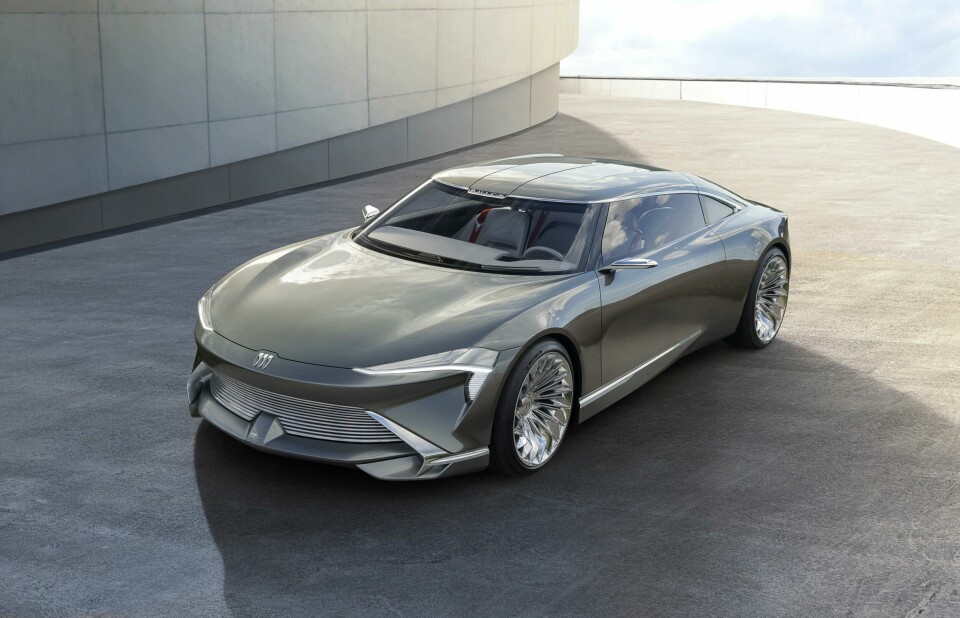
Buick unveils super slick Wildcat EV concept
The latest Wildcat concept from Buick takes a few design cues from its predecessors, but includes many modern elements too
Buick has unveiled its new Wildcat EV concept at an event in Detroit. A slick and slender two door electric coupe, the model represents an enormous change for Buick in terms of design while simultaneously retaining elements that link to its long and rich history.
“The Wildcat EV concept represents the real design future for the brand,” says Sharon Gauci, executive director, global Buick and GMC design. “Buick has always been forward looking and this expression is a glimpse of where we’re going, and the optimism we have for the limitless possibilities of an electric future.”
The stretched shape of the concept is emphasised by sharp lines that run uninterrupted from the headlights to the rear lamps. The long hood, sloping roofline and minimal rear overhang also help to make the concept appear lengthy and aggressive.
At the front, a new Buick face consists of angular body work that pushes into boomerang-shaped blade lights, as well as a wide trapezoidal grille that sits low down beneath the nose. It is flanked by chunky chrome panels that suck air behind the front wheels. The front splitter is painted in the same shade of grey as the body work, and includes a raised middle section that cuts into the grille.
The flanks of the car are dominated by the sharp lines, with the belt and shoulder line seemingly merging into one another on the door panels. Strips of chrome slice back from the front air intakes and run beyond the front wheels into the door panels. The rear wheels protrude outwards, making the stance of the Wildcat firm and unwavering.
At the back, enormous boomerang lights sit inside a glossy black unit. They start horizontally along the rear wheel arches before making a 90-degree turn to push upwards along the roofline. The glossy black area seamlessly makes way for a large rear window – it is all very pleasing and neat. A large, clean body panel is positioned under the rear window, with two small vertical air outlets at the edges. The rear bumper rides up into the body panel, making room for a strip of LEDs that read ‘WILDCAT’ in bold white characters.
“It’s a space intended to strike an emotional chord,” says Therese Pinazzo, Buick exterior and interior design manager. “It is defined by simple, graceful forms that convey balance, harmony and a feeling of warmth”
The interior is a blend of futuristic and old school. A giant screen dominates the IP, spanning nearly its entire width and framed in a chunky chrome casing that is also used for large air vents. Chrome is also scattered on the doors and centre console, the latter of which runs towards the IP before falling short with a delicate-looking touchscreen. There are also two screens protruding from the upper door panels, which would indicate digital wing mirrors. However, there are also traditional wing mirrors, so perhaps they perform another function yet to be determined.
A slim, flat-bottom steering wheel also includes an upper chrome section with a simple linear pattern etched into it. These thin lines are also present on a silver ledge in the middle of the IP that juts out towards the centre console, and the glossy black surface of the centre console. The bucket-like seats join to the centre console. They consist of two separate parts, with the upper section floating and a space in between for airflow.
The colour scheme in the cabin is kept simple. The upper sill of the IP, plush carpets, and upper sections of the seats are finished in white, while the headliner, lower IP and most of the door panels are black. The lower part of the seats are a soft shade of grey. Orange seat belts bring an injection of colour, as do various ambient lighting strips that run along the IP and centre console.
In terms of tech, Buick says the concept leverages AI, biometrics and aromatherapy to create a unique user experience. These can be used to automatically adjust driver settings. An array of various sensors allow the vehicle’s system to detect an elevation in driver heart rate, for example, which can result in the activation of ‘Zen Mode’. This will see the dimming of the cabin lights, the dispersing of calming scents, and the massage seats turned on.
“It’s a space intended to strike an emotional chord,” says Therese Pinazzo, Buick exterior and interior design manager. “It is defined by simple, graceful forms that convey balance, harmony and a feeling of warmth.”
Buick has used the Wildcat name for numerous concept cars over the past 70 years. The first one, shown back in 1953, took the form of a low-riding two-seat convertible cruiser. Its influence on this latest Wildcat concept is clear, particularly from the stretched body, wide front grille, and heavy use of chrome detailing.


















